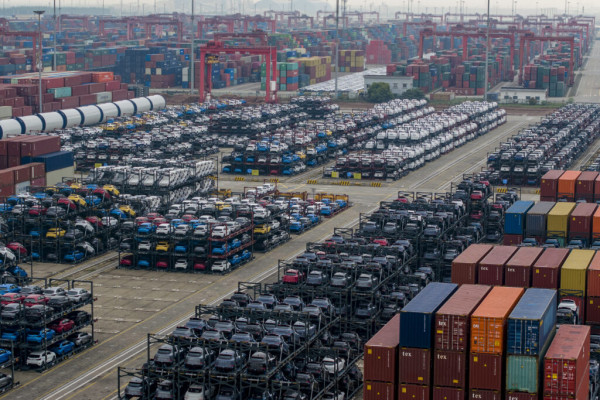Chinese electric vehicles face possible EU tariff hit
BRUSSELS — Chinese electric carmakers raced to get EVs into the bloc ahead of the July 5 deadline when new EU tariffs went into effect, betting they would not face backdated duties.
But they may have miscalculated, with the European Commission saying that it will make a decision in the fall on making the duties retroactive from March.
As part of its investigation into whether Chinese automakers obtained improper subsidies, the European Commission required customs agencies of member countries to track all made-in-China EVs from March, which would give the EU executive the flexibility to retroactively apply the duties. This is a tactic aimed at deterring companies from flooding the market ahead of an expected tariff boost.
Despite that warning, the automakers still took the risk. Shortly after the Commission announced higher-than-anticipated duties on EVs in June, Chinese carmakers frantically put as many vehicles as possible onto container ships sailing to the EU.
Electric vehicle registrations surged in June with more than 202,000 new vehicles receiving their first number plate, compared to an average of 144,000 in April and May, according to data from Schmidt Automotive Research. Broken down by manufacturer, Chinese EV automakers held 12.4 percent market share in June, up from 10.4 percent a year earlier.
The duties — currently only in the form of bank guarantees — are already in place and the Commission will ask EU countries to vote on cementing them into place for five years in October. It will then also decide whether these duties apply retroactively from March 7 or just from July 5, the Commission confirmed to POLITICO.
While all foreign-made cars already face a duty of 10 percent, the new tariffs will see some Chinese automakers facing a combined tariff of as much as 48 percent on their EVs.
Despite the higher price tag, Chinese brands can still make a profit in the European market thanks to their low domestic production costs. A slowing in the Chinese market is further propelling them to seek profits abroad.

“The Chinese will still push. Tariffs are leveling the playing field and not slamming the door shut,” said Matthias Schmidt, an automotive analyst whose firm conducted the research on car imports.
And the shipments are not expected to slow, either, Schmidt said. Vehicle shipping rates are at an all-time high, but Chinese brands are launching their own shipping vessels to continue exporting to the European market.
BYD’s first vessel — the BYD Explorer No. 1, which can carry 7,000 cars — is en route to the EU and is expected to dock in Spain by Saturday.
Apart from increased tariffs, Chinese EV makers could see more competition next year as the EU’s newest emission targets come online. Automakers will have to reduce their emissions by 15 percent compared to a baseline established in 2021, meaning they will need to sell more all-electric models.
European carmakers are also moving into EVs, but with offerings that are more expensive and often less technologically innovative than those made by Chinese companies.
Several European carmakers are launching new models next year to coincide with the emissions regulation, which Schmidt says will help keep Chinese EV market share steady at 12 percent.
Beijing is hoping to find a negotiated solution with Brussels that would avert the duties altogether. So far, these talks have not been going very well, with the Chinese side unwilling to acknowledge the EU’s point of view that it unfairly subsidizes the sector along the whole production chain — from lithium refining to shipping.
Chinese export associations, meanwhile, argue the EU is losing its attractiveness as an investment destination.